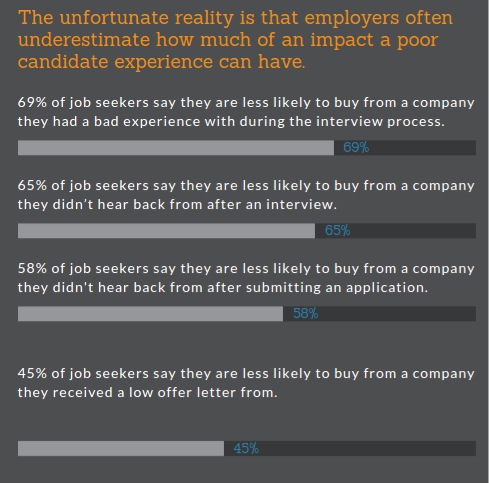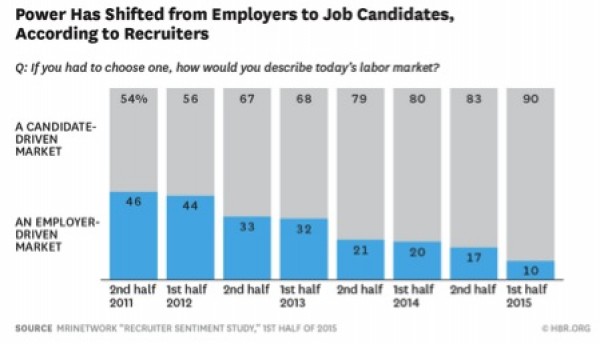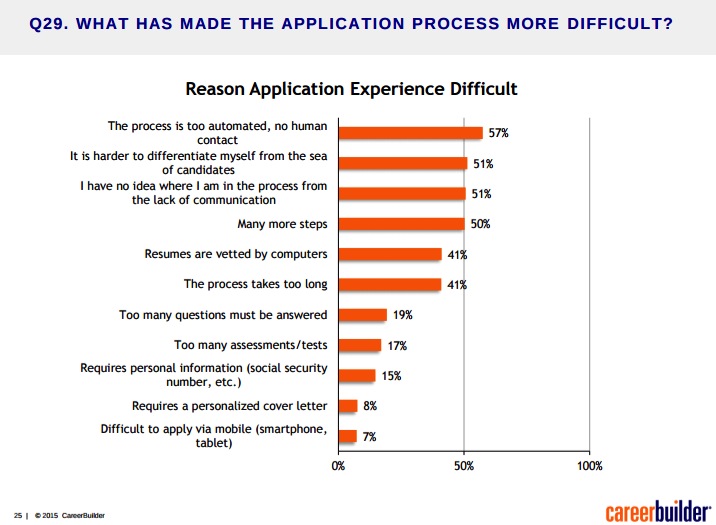Welcome to H2-2015: How the Tables Have Turned!
As the economy continues to rebound and the employment supply-demand landscape evolves for specialized talent, power is clearly shifting back in favor of candidates. According to the Harvard Business Review, “Job seekers hold more power than employees, a trend that seems to be deepening.”
The HBR’s Recruiter Sentiment Study, reflecting the trend from H2-2011 to H1-2015 (see graphic below), confirms that 90% of recruiters now see candidates in the driver’s seat. One responding recruiter states, “It is definitely and without a doubt a candidate-driven market, however many employers are still laboring under the same processes as they did when it was an employer-driven market.”
Further reinforcing the trends identified in the HBR study is the 2015 Candidate Behavior Report (CBR) by CareerBuilder. According to CBR findings, ‘employers are losing top performers and replacing them with candidates having specialized skills is proving very difficult’.
According to the U.S. Job Seeker Data Report, top talent acquisition in a candidate-driven market is made all that much more difficult because ‘most hiring processes are inefficient, with 58% of the over 2,000 employers polled reporting they fail to get even the basics right on a consistent basis – including accurate attribution of the method by which qualified candidates are sourced’.
Stuck in their antiquated processes, hiring managers need to update and adapt accordingly. In a candidate-driven market businesses ‘should shift focus away from ineffective automation and towards recruitment strategy, allocating their resources to understanding candidate behavior and building a strong employer brand’. In order to successfully evolve practices, employers should adjust their hiring and interviewing operations or outsource their talent acquisition to an agency with a proven track record of success in such a candidate-driven, competitive environment.
Oh, the Humanity!
When asked why the application process was difficult, 57% of the over 5,000 candidates taking part in CareerBuilder’s survey listed that the process was too automated, with too little human contact. Automated recruitment may have delivered semi-qualified candidates quickly within the employer-driven market, but as the environment evolves a lack of human relationship building will result in a perpetually open position, or worse – a bad hire.
Ironically, the majority of employers surveyed prefer a passive candidate, defined as “an employed individual, not actively looking to switch employers but open to new job opportunities”. With this in mind, the days of the automated “cattle call” are over for those classified as executive, managerial or specialized professional candidates.
Hiring managers and related talent acquisition facilitators need to adapt in an effort to be more personal and attentive within the early stages of the hiring process if they want to recruit, attract and close more qualified candidates. In a candidate-driven market employers must research the candidate pool, understanding both the needs of the applicants as well as the processes and sources used to find them.
Employment Branding
Of candidates polled as part of the CBR, 77% said they would accept a salary 5% lower than their self-reported lowest acceptable salary if the company made a great impression during the hiring process. In addition, 68% of candidates reported that their experience (positive or negative) with the hiring manager/recruiter during the application process would have an impact on accepting the position. Amazingly enough, 69% said that they would be less likely to be a customer of a company if they had a bad experience during an interview process.
In order to qualify as a positive experience and establish their company as an appealing employer, hiring managers need to be more responsive. Only a dismal 14% of candidates feel companies are responsive to them. Of the employers polled, 29% blame volume of candidates, while 18% blame lack of time as to why they could not respond. Shockingly, 10% blamed their own company policy on communication with candidates. This approach will not work in a candidate-driven marketplace.

Staying Ahead by Establishing a Talent Pipeline
Rather than relying on the spur-of-the-moment automated candidate cattle call, employers need to think long-term about talent identification and relationship building. By developing a talent network of candidates who may not be currently looking to switch positions and in support of positions that may not be opened until a later date, companies will have a leg up on the competition. When that headcount is finally approved and funded, you’ll be in a position to re-engage with pre-qualified candidates and grab them before someone else does.
At the end of the day, and regardless of whether of whether adapting means altering internal practices or engaging expert outside talent acquisition consultants, the faster a company adapts to the current candidate-driven market, the greater the advantage they will have in sustaining their success and fueling their ongoing growth.






